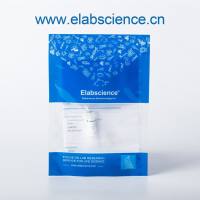Synaptoneurosomes: A Preparation for Studying Subhippocampal GABAA Receptor Activity
互联网
641
Although synaptosomes are a widely accepted preparation for studying regulation of transmitter release at the isolated presynaptic level (see also Chapter 4 ), they are not suited for the investigation of synaptic events mediated by postsynaptic mechanisms. In the past, isolated membrane fractions enriched in postsynaptic densities have been used for this purpose (1 ). However, this fraction of postsynaptic densities is not appropriate to study receptor-mediated signal transduction because of the absence of intact sealed structures in this preparation. For this reason, a subcellular preparation enriched in resealed presynaptic structures (synaptosomes) with attached sealed postsynaptic entities (neurosomes) has been developed. These composite structures are called synaptoneurosomes. Biochemical characterization of synaptoneurosome preparations has revealed the presence of a number of receptor-mediated properties and a maintained electrochemical gradient (2 ,3 ). Since its first description, this preparation has been used for the investigation of numerous phenomena, including neurotransmitter release (4 ), inositol phospholipid turnover (5 ,6 ), CAMP accumulation (2 ), as well as in functional studies of various neurotransmitter receptors (7 ).







